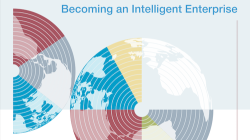In this paper, we will explore these different areas to explain what they are, how they have benefited other organisations
Digitized FP&A Business Partnering is now the latest trend that is going well beyond just Finance involving the entire organization to
The New Normal means that planning is no longer an extrapolation of the past. Similarly, business drivers that worked last
As Einstein said, “In the middle of every difficulty lies opportunity.” This survey we believe offers hope, insight, and a
The role of the CFO is changing: It’s moving away from compliance and optimization, towards a more strategic; customer facing
Pagination
Subscribe to
FP&A Trends Digest

We will regularly update you on the latest trends and developments in FP&A. Take the opportunity to have articles written by finance thought leaders delivered directly to your inbox; watch compelling webinars; connect with like-minded professionals; and become a part of our global community.








